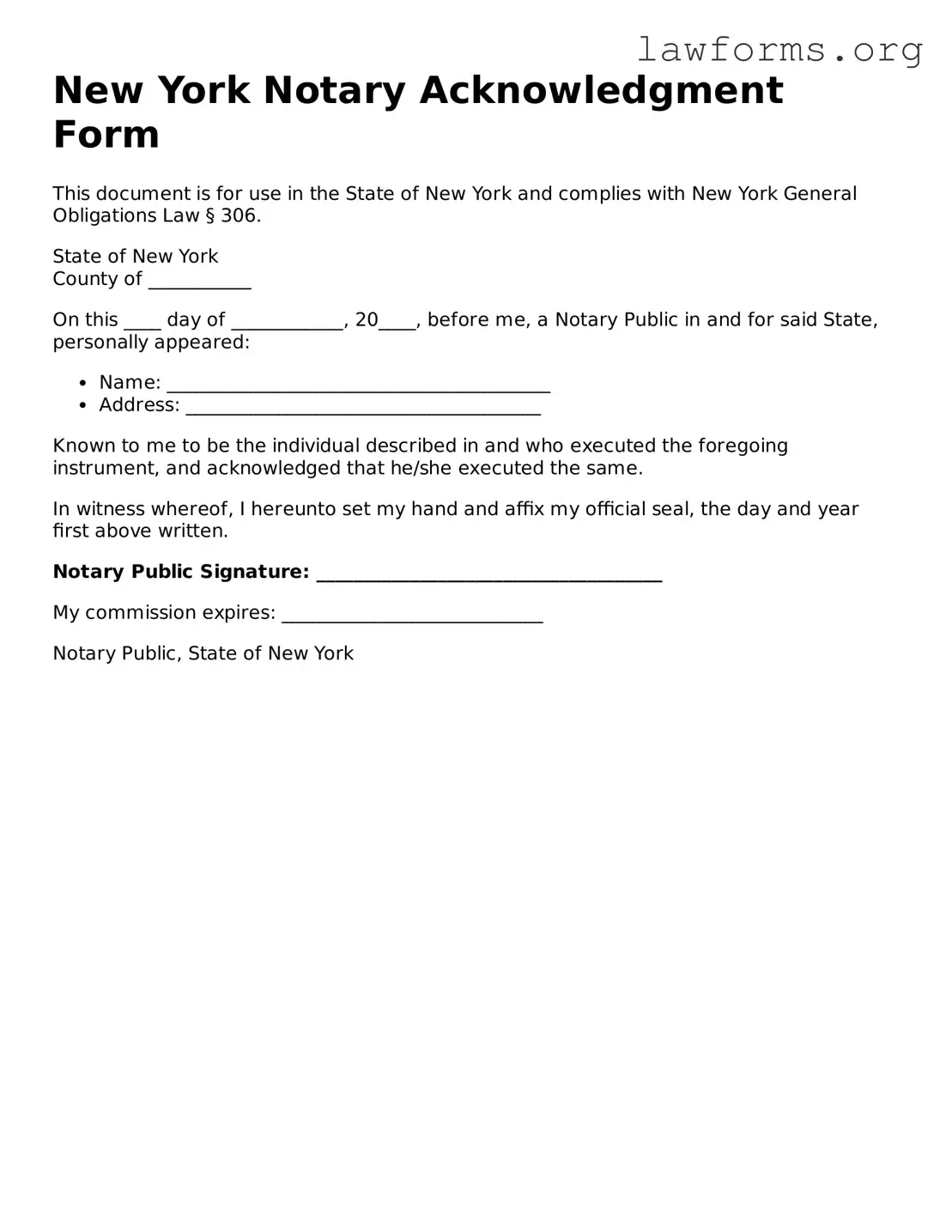Attorney-Approved Notary Acknowledgement Template for the State of New York
The New York Notary Acknowledgment form is a legal document used to verify the identity of individuals signing a document. This form ensures that the signer is doing so willingly and understands the contents of the document. To get started on your notary acknowledgment, fill out the form by clicking the button below.
Customize Document Online
